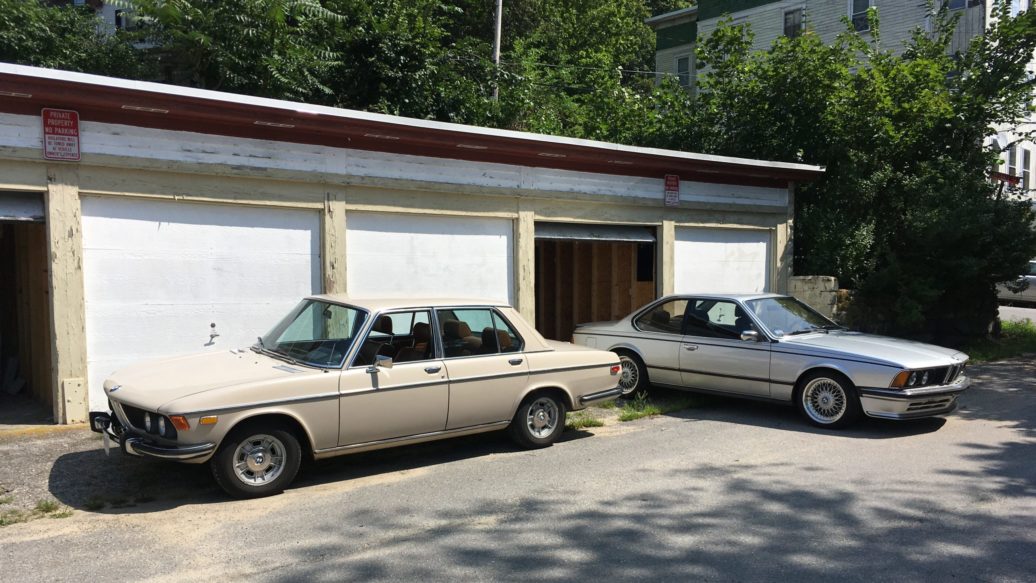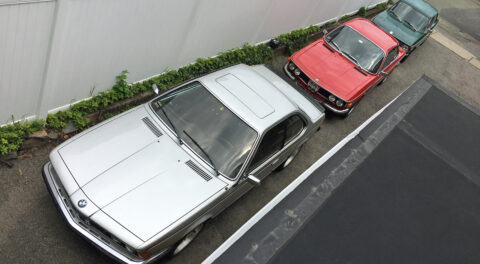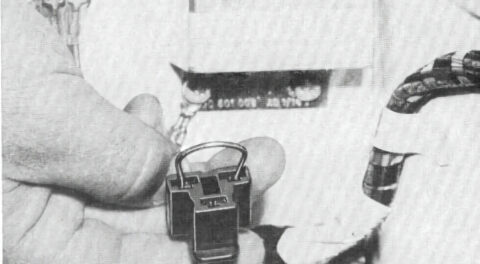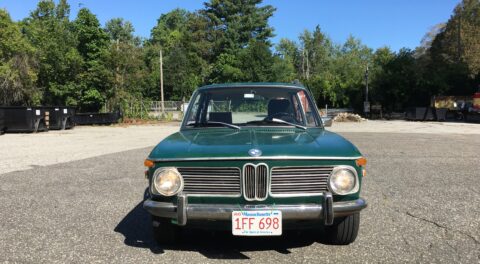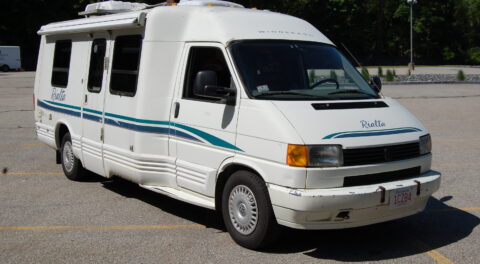I ended last week’s piece by saying, “My plan is to drive out to Fitchburg in the Bavaria this weekend, swap it for the E24 [the 1979 Euro 635CSi], and use a planned Labor Day trip to Vermont as a shake-down for the car. If I find something ominous that I can’t address before departing for the Vintage, the nod will go to the Bavaria.”
Nothing truly ominous appeared with the shark—but there were a few hiccups.
I actually wound up driving out to Fitchburg in the Bavaria twice; the first time, it was beastly hot out, and when I left Fitchburg in the E24—which hadn’t been driven in months—its temperature gauge almost immediately shot into the red. I had a moment of intense concern; then I remembered that when I replaced the instrument cluster last November (which was necessary because I’d swapped differentials, making it so the speedo in the car’s original cluster was reading a good 15 mph too high at highway speeds), the temperature gauge in the new cluster would peg and stick there, although it seemed to eventually fall back to a true reading.
Now, however, as I began driving the shark home, the difference between the pegged reading and the fall-back-to reading became smaller and smaller. I had dealt with this kind of fault in Louie, the 2002tii in Ran When Parked, all the way home from Louisville, and it nearly caused me to lose my sanity.
After a few miles, I turned around and went back to the Fitchburg garage, where I recalled that I wrote a Roundel column about an experience with my friend Jose’s 2002 at Oktoberfest 2019, in which his car’s temperature gauge rapidly swung into the red, but my friend Bruce Machon showed that physically laying one’s hands on the engine revealed that it was barely warm. Now I felt the E24’s engine and the radiator, and they sure felt hot to me.
I restarted the still-hot Bavaria, ran it around the block a few times to make sure yjay it was actually at operating temperature, and with my hands as a fleshly thermometer, I tried to compare that car with the E24. Both radiator caps were too hot to hold my hand on; was the E24 actually running hotter than the Bavaria? I couldn’t tell—probably not. But since the cost of being wrong was a cracked head, I left Sharkie in Fitchburg and headed back home in the Bavaria.

Close, but no shark.
A few days later, in overcast, much cooler weather, I again headed to Fitchburg in the Bavaria, this time toting the original instrument cluster, my travel tool chest, and an infrared temperature gun. When I arrived, I took some readings with the IR gun on the warmed-up Bav. Now, I don’t regard these IR guns as the answer for “Is it hot or not?” questions, and I’ll explain why in a moment; I just wanted to gather some data with it.
The better thing to do was swap clusters. My plan, in the shade of the Fitchburg garage, was to swap clusters and know for certain whether or not the shark was running hot. If it was, then obviously the cause had to be determined and dealt with immediately. If it wasn’t, and the problem was just the gauge, I could decide later what to do about it.
I’ve swapped clusters in the shark in Fitchburg before. It’s a little more involved than in a 2002, but not a big deal. However, it was so nice and cool and overcast that my right brain overruled my left: I thought the odds of the car overheating were small, and I just began driving home.
Bad idea.
The gauge did its peg-then-bounce-between-values thing, but when I got on the highway, the sun came out, it got much hotter, and the difference between pegged and the “normal” value got smaller and smaller. as it had a few days earlier. I pulled into a rest area and used the IR gun on the shark’s engine. Below is a table of comparative readings in Fahrenheit between the Bavaria and the E24.
| Bavaria | Shark | |
| upper radiator hose | 150 | 160 |
| radiator upper left | 145 | 163 |
| radiator upper right | 95 | 150 |
| thermostat housing front | 170 | 155 |
| center of water divider | 185 | 200 |
| lower radiator hose | 125 | 160 |
So, was the shark running hot? Probably not—but the point is that since you can’t shine the IR gun into the pressurized coolant itself, you have to shine it on some external part of the engine, and there’s a pretty wide temperature variation between all the different pieces of coolant-related metal and rubber. Unless you have a really good baseline, like taking readings on a car that actually is running too hot as manifested on a correctly-working instrument cluster gauge, it’s not something I feel comfortable risking a cracked head over. So I changed instrument clusters in the parking lot of the rest area.
I said that this isn’t really that big a deal, and that I’d done it before in the Fitchburg garage—but that was nearly a year ago. This isn’t like swapping 2002 clusters, which I’ve done a hundred times. I didn’t immediately remember that you need to pop the cover off the little diagnostic panel on the left side of the steering wheel and then unscrew it to access the two Phillips screws holding in the left side of the cluster, nor did I recall that you need to undo the two 13-mm bolts that hold the steering column to the body in order to get enough clearance to pull the cluster out. In fact, I hadn’t driven the E24 in so long that I thought that the big curved silver lever beneath the steering column was to tilt the column down, and couldn’t figure out why it wasn’t working (it’s actually the fore-and-aft steering-wheel adjustment). There was no shade in which to park the car , I was hot and tired, and I felt foolish making these mistakes.
Fortunately, the rest area had a vending machine with cold seltzer. I chilled out a bit, went back, and got it done.

A little messy, as rest-area repairs go.
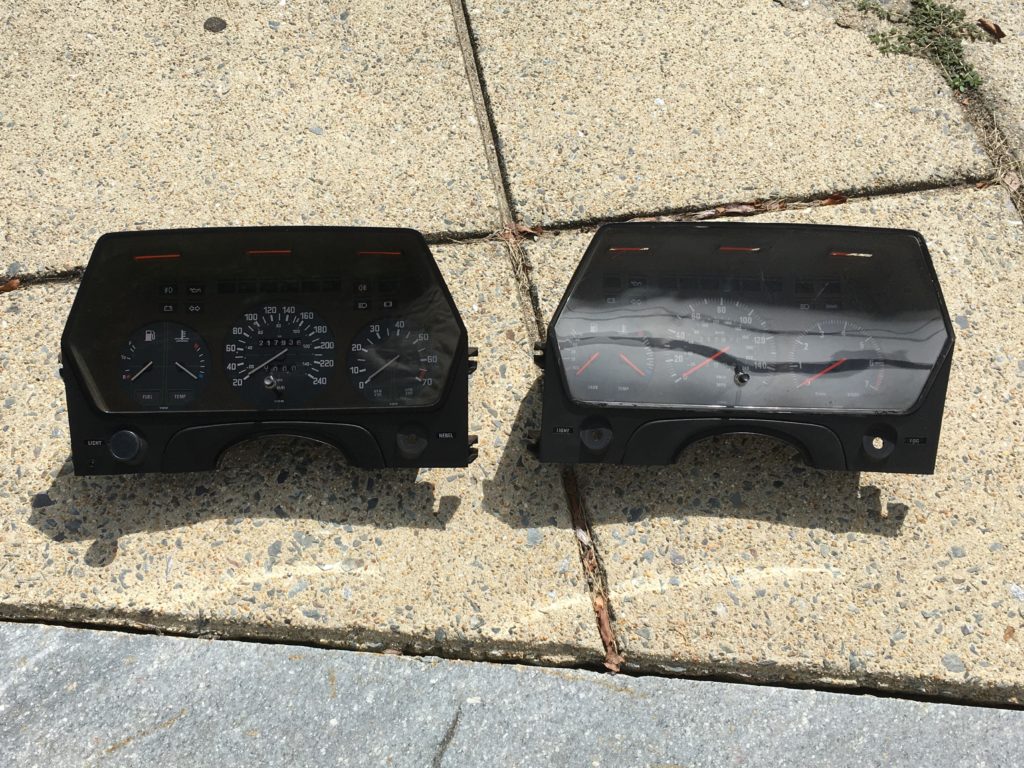
Replacement cluster (left) and original.
To no great surprise, with the original cluster back in, the temperature gauge ran slightly below halfway up and stayed there. Unfortunately, the original cluster has the mis-calibrated speedo that reads 90 when I’m doing 75. But I can live with that.
At some point I’ll circle back on this whole cluster business. Yes, I’m aware of the ritualistic grounding the back of the temperature gauge to try to eliminate the jumpiness, but my recent experience has indicated problems with the gauge itself. For now I just needed to check off “correctly functioning temperature gauge that won’t give me heart palpitations on the way to the Vintage.”
I prefer the look of the original red needles anyway. Maybe over the winter I’ll send the original cluster out to get the speedometer recalibrated.
Sharkie made it back to Newton without incident. Then, even with its loud exhaust, it passed its annual Massachusetts inspection. I gave the car a quick once-over, and the next day, Maire Anne and I drove it to Manchester, Vermont, to hang out with some old friends we hadn’t seen since pre-pandemic days. The mix of Interstates, two-lane highways, and small twisty roads reminded me of how capable this car is: Other than a little driveline vibration at certain speeds, almost certainly from less-than-perfectly-round rear BBS RC090 Style 5 wheels, the big coupe was a joy to drive on the 350-mile shakedown trip.
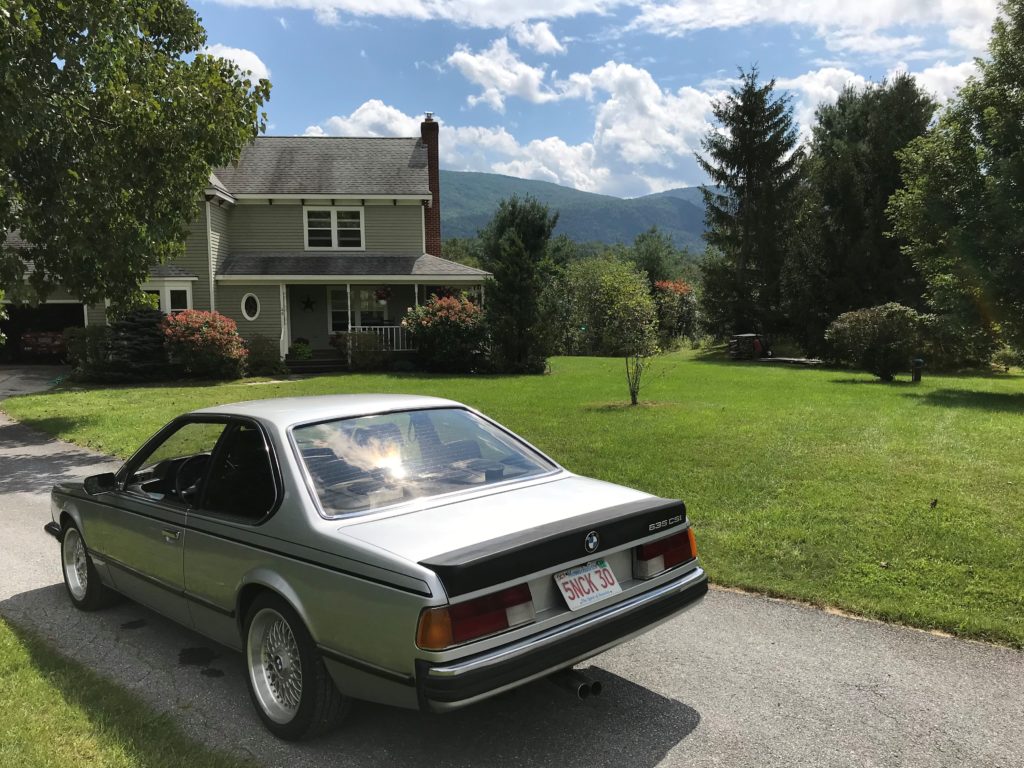
The E24 enjoys some R&R along with me and Maire Anne in the Green Mountains.
The only thing that went wrong was that the blower fan in the a/c evaporator assembly stopped working on any speed other than high—the textbook symptom of something being wrong with the fan-speed resistors or their wiring. If this was the heater-blower fan, the resistor pack would be replaceable from under the hood, but the one for the a/c fan is on the right side of the evaporator assembly. I thought that I would have to pull the console out, but it turns out that there’s a little piece of plastic trim in the glovebox that you can unscrew and access the terminals to the resistor pack. Reseating the spade connectors solved the problem.
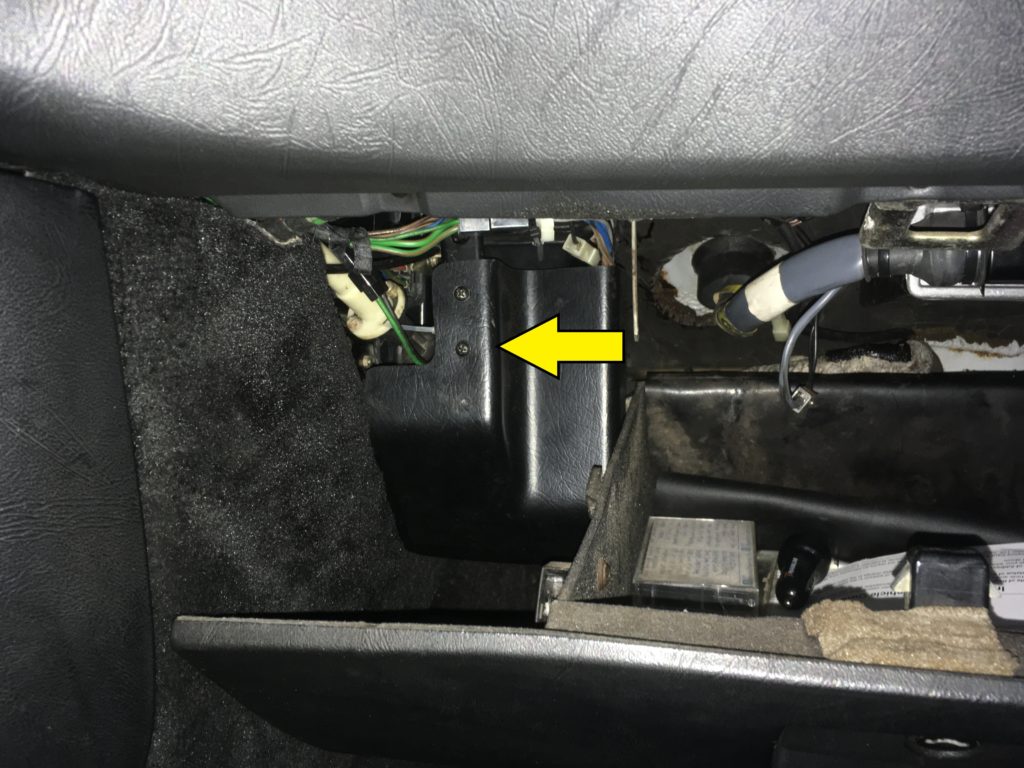
The secret access panel.

The connections to the a/c evaporator assembly resistor pack.
So unless there’s some other hiccup, Sharkie and I will see some of you at the Vintage in Asheville next Friday.—Rob Siegel
Rob’s new book, The Best of The Hack Mechanic, is available here on Amazon, as are his seven other books. Signed copies can be ordered directly from Rob here.

